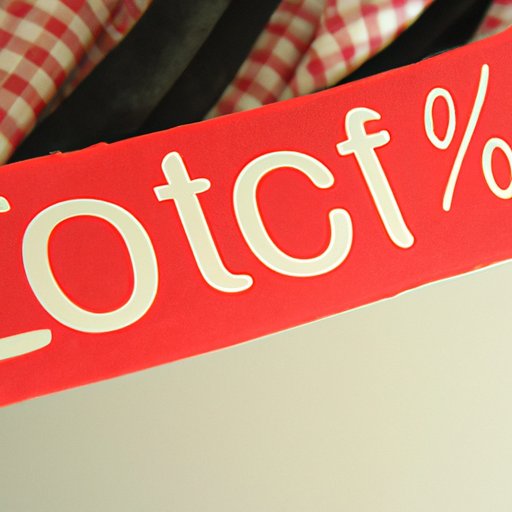Introduction
Fast fashion brands have become increasingly popular in recent years, especially among younger generations. But what exactly are fast fashion brands and what is their impact on the environment?
Fast fashion refers to clothing that is produced quickly and cheaply to meet the latest trends. These are clothes that are made with lower quality materials and sold at lower prices than traditional luxury labels. The goal of fast fashion brands is to produce as many clothes as possible in the shortest amount of time so that they can remain competitive in a rapidly changing market.
The environmental impact of fast fashion has been a major concern for many years. Fast fashion brands are often criticized for their reliance on unsustainable materials, exploitation of labor, and disregard for ethical manufacturing practices. As more people become aware of the negative impacts of fast fashion, there is a growing demand for sustainable alternatives.

Pros and Cons of Shopping for Affordable Clothing from Fast Fashion Brands
Shopping for affordable clothing from fast fashion brands has both its advantages and disadvantages. On one hand, consumers can find a wide variety of styles at lower prices than they would find elsewhere. On the other hand, these cheaper clothes come with a heavy environmental cost.
Lower Prices
One of the main benefits of shopping for affordable clothing from fast fashion brands is the lower price point. These brands are able to keep their prices low by using cheaper materials and cutting corners on production costs, which means that consumers can buy more clothes for less money.
Variety of Styles
Another benefit of shopping from fast fashion brands is the variety of styles available. Fast fashion brands are constantly releasing new styles, which allows them to stay up to date with the latest trends. This makes it easy for consumers to find the perfect outfit without breaking the bank.
Negative Environmental Impacts
Unfortunately, the low prices and variety of styles come at a cost to the environment. According to a study conducted by the Ellen MacArthur Foundation, the fashion industry produces 10% of global carbon emissions and 20% of global wastewater each year. Additionally, the production of synthetic fabrics such as polyester and nylon requires large amounts of energy and water, which can further contribute to environmental damage.

Exploring the Popularity of Fast Fashion Brands
Despite the environmental concerns associated with fast fashion, these brands continue to be popular among consumers. There are several factors that have contributed to the success of fast fashion brands, including accessibility and affordability, keeping up with trends, and social media influencers.
Accessibility and Affordability
One of the reasons why fast fashion brands have become so popular is because they are accessible and affordable. Many people don’t have the budget to shop for expensive designer clothing, so fast fashion brands provide an alternative. Additionally, these brands usually have stores located in malls or shopping centers, making it easy for customers to access their products.
Keeping Up with Trends
Another factor driving the popularity of fast fashion brands is the ability to keep up with trends. As trends change quickly, these brands are able to respond quickly by producing new styles within a short period of time. This allows customers to stay on trend without having to invest in expensive pieces.
Social Media Influencers
Social media influencers have also played a role in the growth of fast fashion brands. Many influencers promote these brands on their channels, which can influence their followers to purchase certain items. This has helped to drive sales for fast fashion brands and increase their visibility.
Uncovering the Practices Behind Fast Fashion Brands
While fast fashion brands may offer lower prices and trendy styles, their production practices are often unethical and damaging to the environment. Here are some of the practices behind fast fashion brands that you should be aware of.
Poor Working Conditions
Many fast fashion brands are known for their poor working conditions. In some cases, workers are forced to work long hours in unsafe environments with inadequate pay. Additionally, some brands have been accused of exploiting child labor and engaging in unethical practices such as bribery and corruption.
Low Quality Materials
Fast fashion brands are also known for using low quality materials in order to keep costs down. These materials are often sourced from countries with weak environmental regulations, making it difficult to trace the origin of the materials used in the production process.
Negligence in Sustainability
Lastly, fast fashion brands have been criticized for their negligence when it comes to sustainability. These brands often fail to take responsibility for their environmental impact and do not make efforts to reduce their carbon footprint.
Evaluating the Quality of Fast Fashion Brands vs. High-End Designers
When it comes to evaluating the quality of fast fashion brands versus high-end designers, there are several factors to consider. Here are some of the differences between the two.
Comparing Price Points
The first difference between fast fashion brands and high-end designers is the price point. High-end designers typically charge more for their clothing due to the higher quality materials and better craftsmanship. On the other hand, fast fashion brands are able to keep their prices low by cutting corners on production costs.
Assessing Quality Standards
Another difference between the two is the quality standards. High-end designers often adhere to strict quality standards in order to ensure that their products are of the highest quality. On the other hand, fast fashion brands are known for using lower quality materials and cutting corners on production costs in order to keep prices low.
Examining Durability
Lastly, the durability of the clothing is another factor to consider. High-end designers use higher quality materials and better craftsmanship, which means their clothing is usually more durable than fast fashion brands. However, fast fashion brands are able to produce more styles in a shorter amount of time, which can be appealing to customers who want to stay on trend.
Conclusion
In conclusion, fast fashion brands have become increasingly popular over the years due to their low prices and variety of styles. However, these brands have been criticized for their environmental impact and unethical production practices. When comparing the quality of fast fashion brands to high-end designers, it is important to consider the price point, quality standards, and durability of the clothing.
Overall, it is important to be mindful of the impact of fast fashion brands on the environment. Consumers can make a difference by shopping responsibly and supporting sustainable alternatives. By doing this, we can help to reduce the negative impacts of fast fashion and create a more sustainable future.
(Note: Is this article not meeting your expectations? Do you have knowledge or insights to share? Unlock new opportunities and expand your reach by joining our authors team. Click Registration to join us and share your expertise with our readers.)
